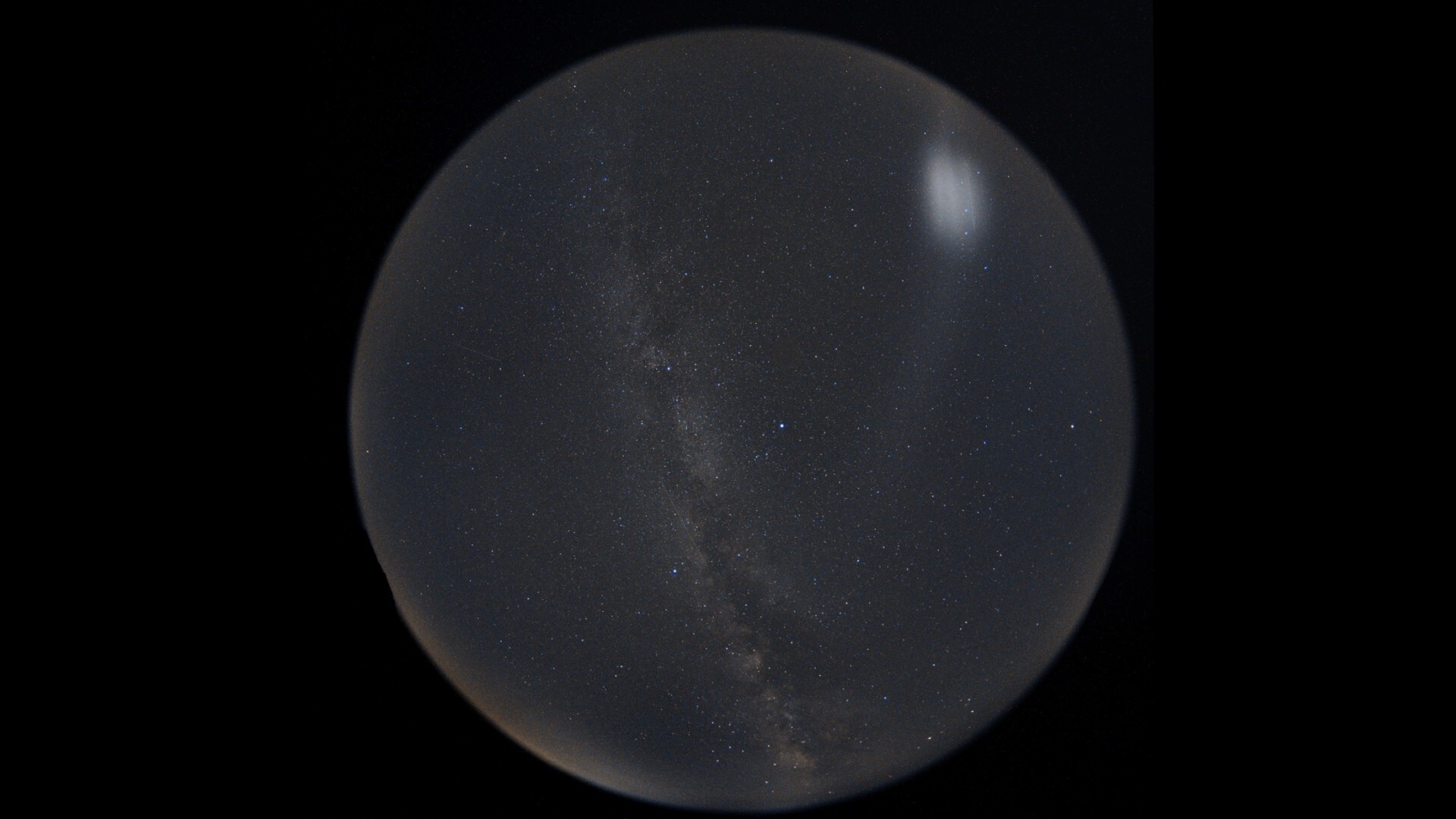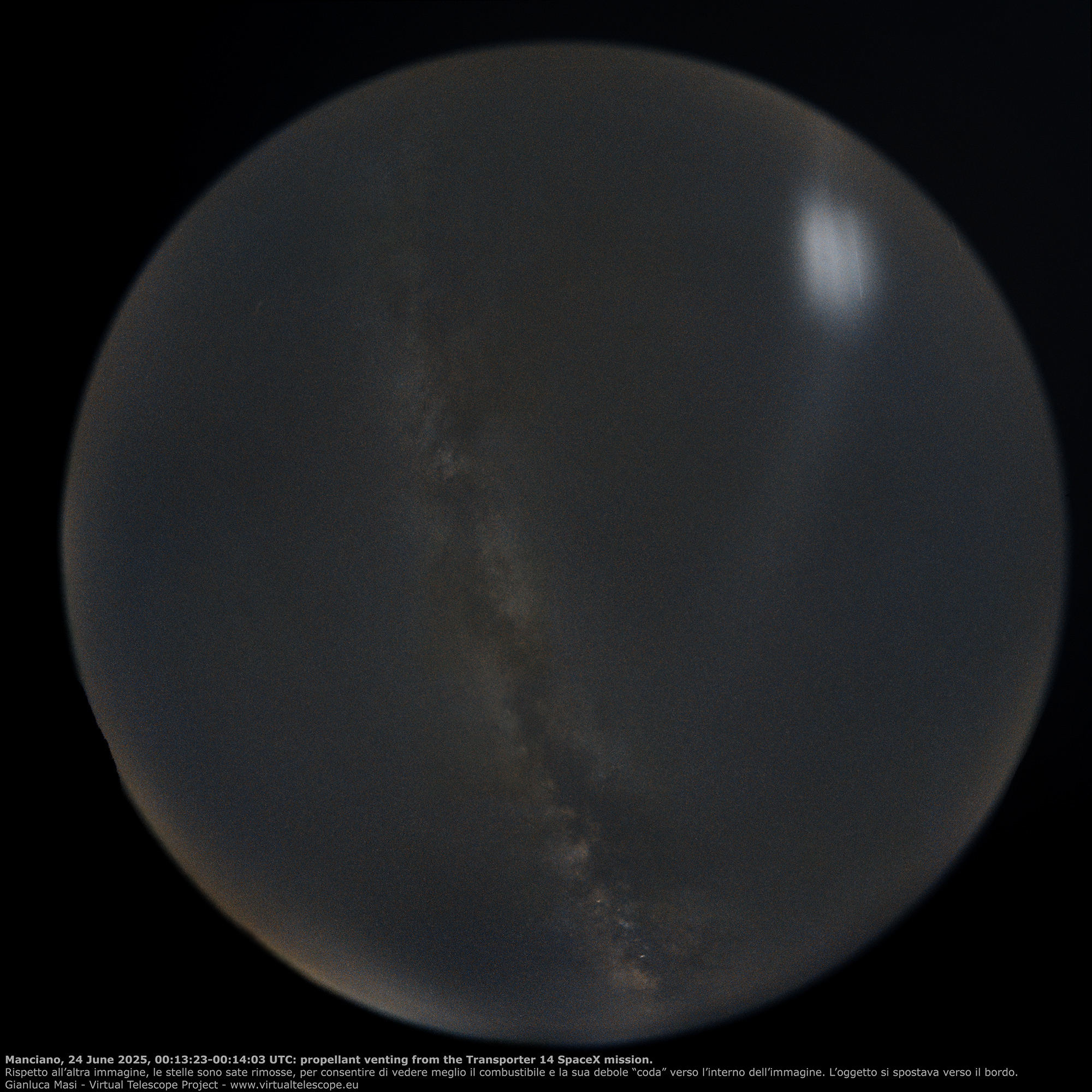Stargazers in Europe spot a strange cloud from SpaceX Falcon 9 rocket launch
The culprit was a SpaceX Falcon 9 rocket launching the Transporter-14 satellite rideshare mission.

The upper stage of a SpaceX Falcon 9 rocket treated stargazers in Europe to a surprise display on the night of June 23, when a plume of rocket propellant briefly became visible to the naked eye.
SpaceX's Transporter 14 mission lifted off from California's Vanderberg Space Force Base earlier this week carrying 70 commercial payloads bound for low-Earth orbit aboard one of the company's workhorse Falcon 9 rockets.
The June 23 launch saw the first stage of the reusable rocket make a controlled landing on the droneship "Of Course I Still Love You" in the Pacific Ocean, while the payload-bearing upper stage powered on to its target orbit.
Transporter 14's upper stage proceeded to deploy its payloads and release a plume of rocket propellant prior to re-entering Earth's atmosphere, which quickly froze and reflected sunlight, becoming visible to eagle-eyed stargazers in Europe.
Luckily, the Virtual Telescope Project's all sky camera captured the diffuse cloud of particles in the night sky above Manciano, Italy at 8:13 p.m. EDT on June 23 (0013 GMT June 24) alongside the softly glowing, dust choked band of the Milky Way.

Oxfordshire-based astrophotographer and science communicator Mary McIntyre also recorded a number of time-lapse videos around the same time as the plume passed swiftly over the U.K., using meteor and aurora-hunting cameras.
Huge thanks to @melgigg for telling me the #SpaceX #Transporter14 #rocket had passed over last night, leaving a pretty awesome #RocketPlume. We got it on our #MeteorCameras, auroracam & all sky cam. Looks awesome on the videos!#RocketPlume #RocketLaunch pic.twitter.com/rprGXeig7SJune 24, 2025
Similar plumes have been spotted in the wake of previous rideshare missions where a Falcon 9 upper stage has been ordered to perform a fuel purge. The orientation and movement of rocket upper stages have been known to create unique patterns and majestic swirls in the night sky, though on this occasion the propellant lacked any such defined structure.
Breaking space news, the latest updates on rocket launches, skywatching events and more!
Some scientists believe that rocket propellant may play a part in the formation of high altitude 'night shining' noctilucent clouds - a phenomenon that is more common at northerly altitudes, but has been spotted manifesting closer to the equator in recent decades.

Anthony Wood joined Space.com in April 2025 after contributing articles to outlets including IGN, New Atlas and Gizmodo. He has a passion for the night sky, science, Hideo Kojima, and human space exploration, and can’t wait for the day when astronauts once again set foot on the moon.
You must confirm your public display name before commenting
Please logout and then login again, you will then be prompted to enter your display name.
